Elimination of Stepped-up Basis Poses Hazards to Family Farms
TOPICS
Taxes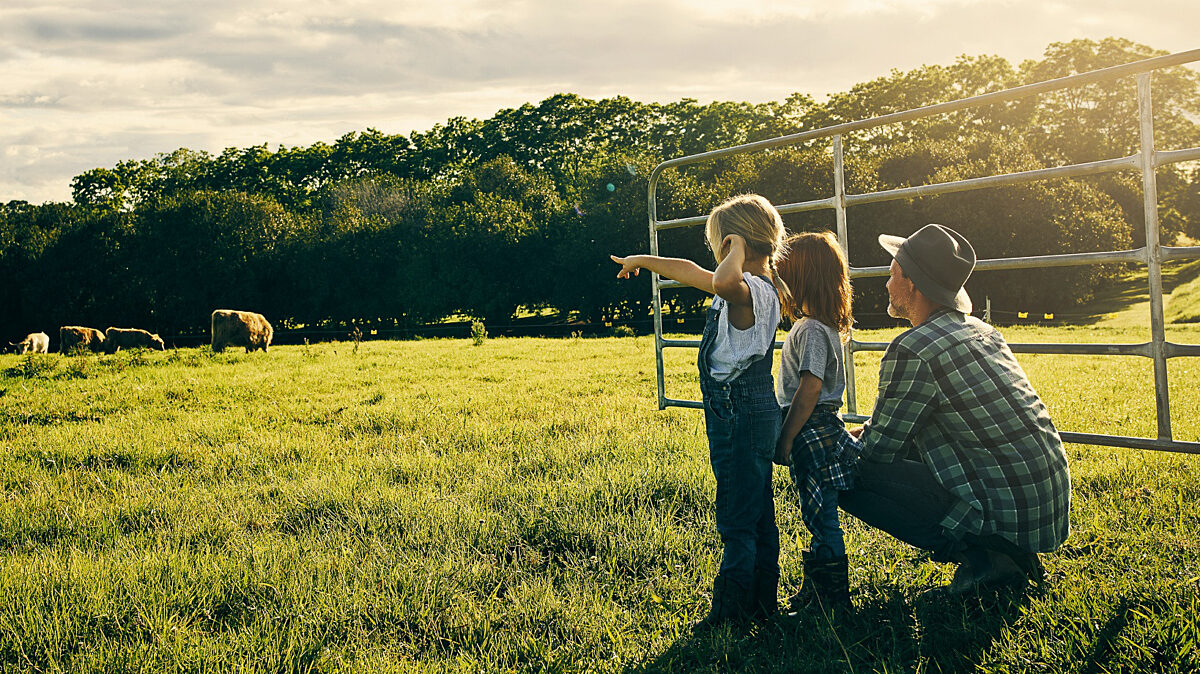
photo credit: Getty Images
John Newton, Ph.D.
Vice President of Public Policy and Economic Analysis
Capital gains taxes are based on the change in the value of an asset, such as farmland, livestock or timber, when that asset is sold. Currently, the top capital gains tax rate is 20%. To reduce the capital gains tax, farmers and ranchers use stepped-up basis, which provides a reset for the basis during intergenerational transfers. In effect, upon the transfer of assets following a death, the basis is reset to the market value at the date of death. Following the adjustment, taxes can be levied only on gains realized by the individual during his or her ownership, not on gains realized prior to the step up in basis.
Any change in capital gains tax policy that eliminates or scales back stepped-up basis could result in a massive tax burden on the agricultural sector. The magnitude of the burden depends on the change in the asset value, but it would likely significantly exceed the annual income generated by the assets. In fact, it could take years of returns to equal the amount of the tax. Using USDA’s 2020 Land Values Summary, the change in cropland values from 1997, and cash rental rate data, and assuming a capital gains tax rate of 20%, today’s article estimates the capital gains tax as a share of cash rental rates on cropland and the number of years needed to pay the capital gains tax (based on cash rental rates) if the tax is fully capitalized into the value of land and the step up in basis is not preserved. A previous article reviewed the detrimental impact that reduction in estate tax exemption levels would have on family farms (Estate Taxes Are A Threat to Family Farms).
Change in Cropland Values and Estimated Capital Gains Tax
One of the reasons the step up in basis is so important to farmers and ranchers is the asset values in agriculture have appreciated significantly in recent years. As a result, when farmland is inherited, without a step up in basis, many farmers would face very significant capital gains taxes. For example, since 1997 (the first year of land value data from USDA) the average cropland value in the U.S. has increased by 223%, rocketing from $1,270 per acre to $4,100 per acre. In portions of the Corn Belt, the change in land values is even more significant. In South Dakota, North Dakota, Wisconsin, Minnesota, Nebraska and Iowa, the change in cropland values since 1997 exceeds 300%.
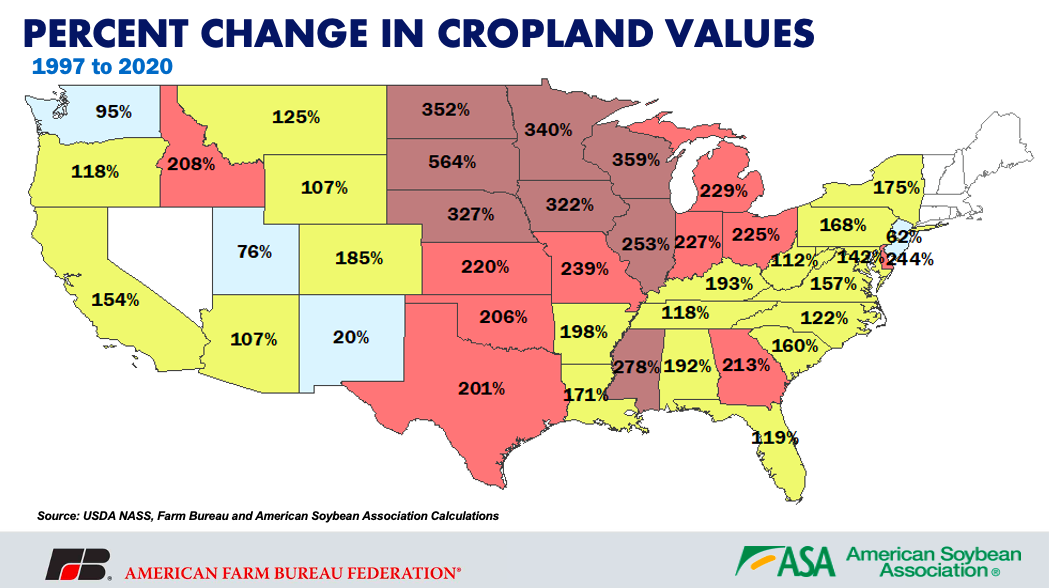
In high-productivity cropland areas such as Iowa and Illinois, the average cropland value has increased by more than $5,000 per acre since 1997. Similar changes in cropland values have occurred in areas near metropolitan centers, such as in Florida and California and along the East Coast. Assuming a capital gains tax of 20% on the change in cropland value from 1997 to 2020, farmers would face estimated capital gains taxes of more than $1,000 per acre in California, Iowa, Illinois, Delaware and New Jersey. Based on national average cropland values in the U.S., the average capital gains tax would exceed $560 per acre.
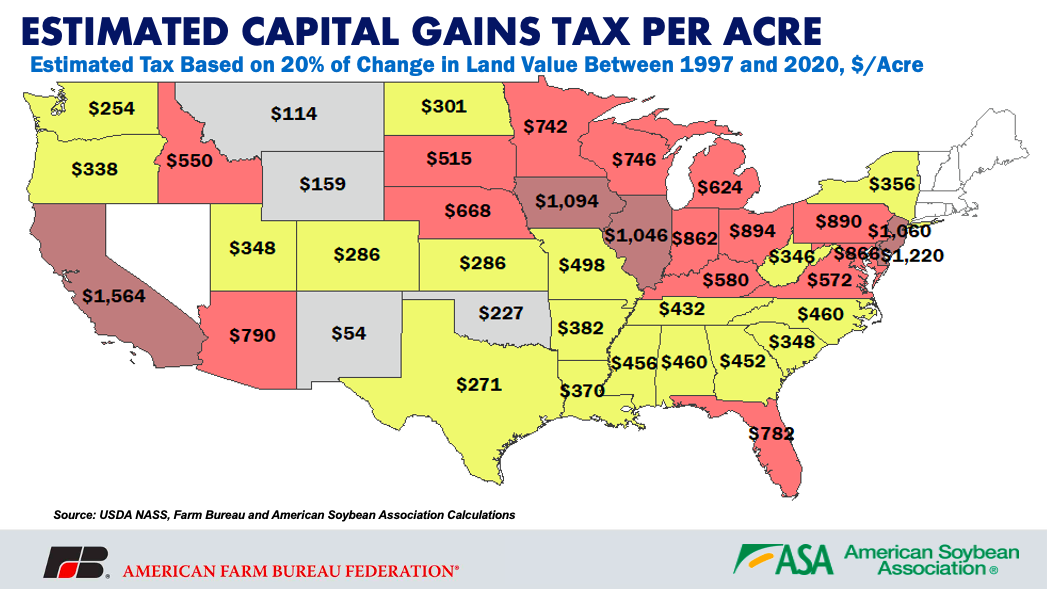
Putting Capital Gains Taxes Into Perspective
A capital gains tax of more than $500 per acre does not immediately convey the significance or magnitude of the tax increase, so it’s important to put this tax into perspective. Farming and ranching is an asset-intensive and low-margin sector. According to USDA-Economic Research Service’s February 2021 Farm Income Forecast, the projected five-year average rate of return on farm assets is 2.8%—significantly lower than the median five-year average return on assets for the S&P 500 of nearly 8.0%. At this rate, $1 million in farm assets would only generate an annual income of $27,800. As a result of lower returns on farmland assets, taxes based on asset valuation become even more significant for agricultural producers because the assets generate much lower returns than other asset classes.
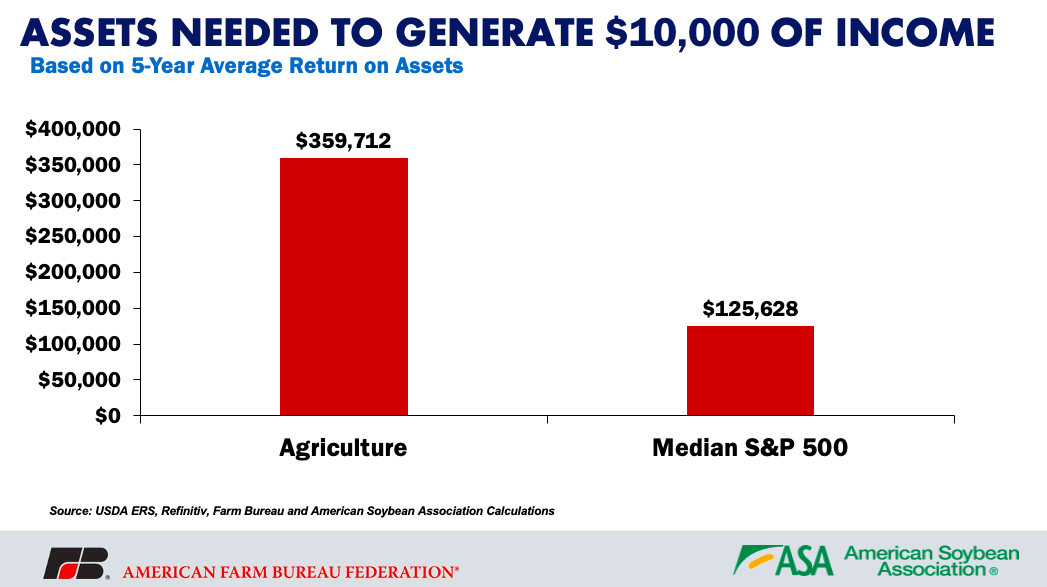
The capital gains tax was calculated based on the appreciation of farmland. Based on the average change in cropland values, U.S. average cash rents and the estimated capital gains tax, the capital gains tax in the U.S. would equate to more than 400% of the average cash rental rate. Across the U.S., the capital gains tax as a proportion of the cash rental rate ranges from a low of 74% in New Mexico to more than 1,300% in New Jersey. Let that sink in. The capital gains tax per acre in 37 states is more than 400% of the average cash rental rate—a very large tax obligation for many farm families to meet no matter the size of the farm operation. This obligation discourages the sale of land thereby potentially increasing the cost of farmland.
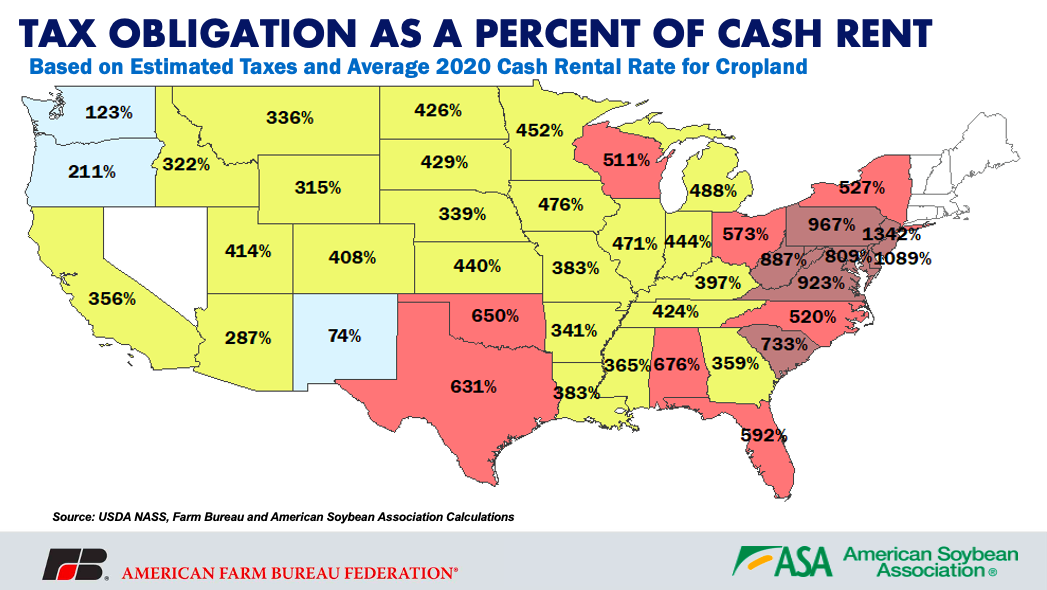
Another way to put the potential effect of removing stepped-up basis into perspective is to compare the potential capital gains tax on land to the rental income from the land in order to estimate how long it would take to offset the loss of stepped-up basis if the capital gains tax was fully incorporated into the land price. The number of years varies by state but is more than four years based on national average rental rates and the estimated tax burden. In states with larger urban areas, it would take longer to pay off the capital gains tax because land values are rising much faster than cash rental rates, as non-agricultural uses drive up land prices. In the center of the country, the range extends from about three years to six years to pay off the tax.
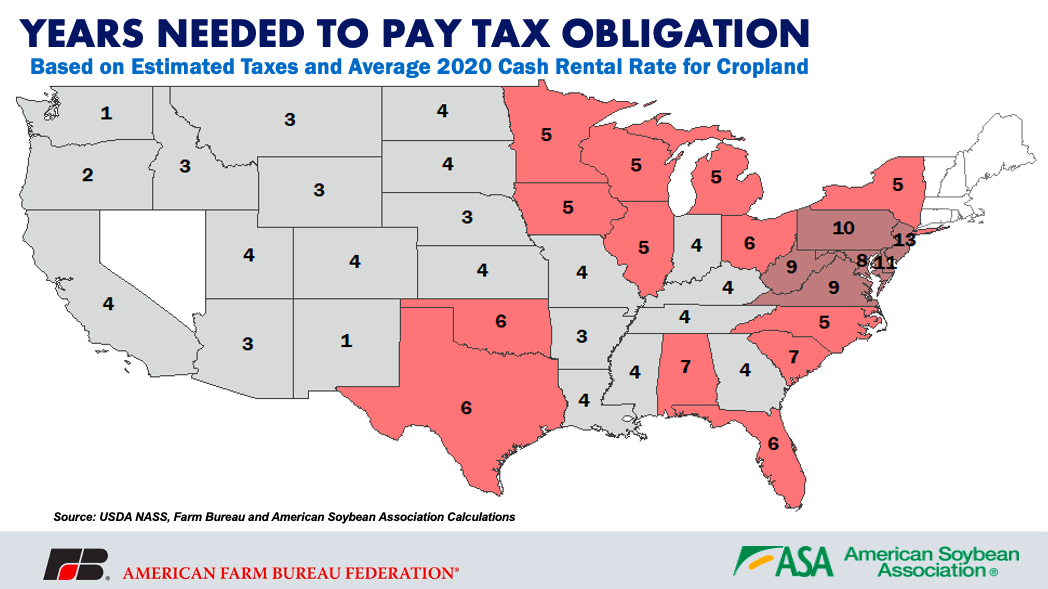
Summary
To minimize the impact of burdensome capital gains taxes, farmers and ranchers use stepped-up basis, which provides a reset for the asset value basis during intergenerational transfers. Capital gains taxes are based on the change in the value of an asset, such as farmland, livestock or timber, when that asset is sold. Assuming a very likely capital gains tax rate of 20%, without stepped-up basis, it’s estimated that the tax burden on farmers and ranchers inheriting cropland would be significantly larger than the cash rental income generated on the farmland. In the case of most farm operations, the capital gains tax would take several years of rental income to pay the tax obligation.
Heirs facing these taxes would incur steep costs from selling the land, thereby increasing costs for everyone in the marketplace. If an estate is passed on with debt, it may not be possible for the family to meet the tax obligation. To protect these family farms and minimize the impact of capital gains taxes, it’s important that farms have continued access to stepped-up basis. Eliminating stepped-up basis to generate more federal income risks the livelihood of America’s family farms and the economic sustainability of these family operations long into the future.
Top Issues
VIEW ALL